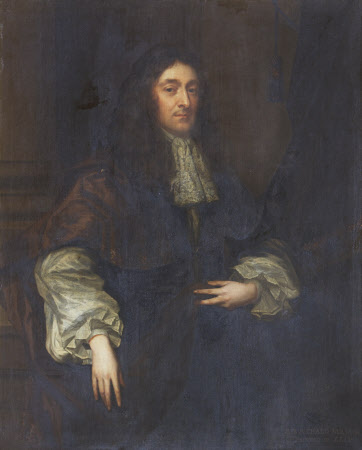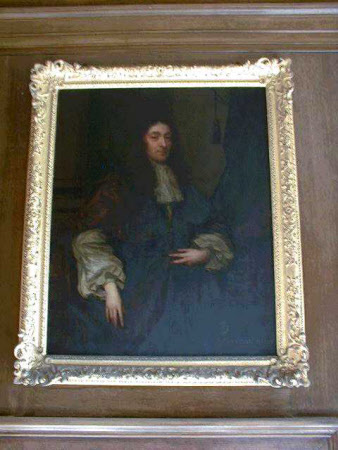Sir Richard Mason, MP (1619-1685)
attributed to Jacob Huysmans (Antwerp c.1630 – London 1696)
Category
Art / Oil paintings
Date
1630 - 1699
Materials
Oil on canvas
Measurements
1770 x 1670 mm
Order this imageCollection
Belton House, Lincolnshire
NT 436061
Summary
Oil painting on canvas, Sir Richard Mason, MP (1619-1685), attributed to Jacob Huysmans (Antwerp c.1630 – London 1696). Inscribed bottom right: SIR RICHARD MASON/PAINTED BY LELY. A three-quarter length portrait of a mature man turned to the right, gazing to the right, in a full-bottomed brown wig, wearing brown robes, full white sleeves and lave jabot. Sir Richard Mason was born 1619 at Sutton, Surrey. He married Anne Margaret Long (d.1717), daughter of Sir James Long, 2nd Bt and Dorothy Leach. He held the office of Comptroller of the Board of the Green Cloth. He had two daughters:Dorothy Mason, Lady Brownlow (1664-1700) and the notorious Anna Mason, Countess of Macclesfield (b.c.1665-1753). He was MP successively for Yarmouth, Isle of Wight and Bishop's Castle, where his country seat lay. He lived latterly at Worcester Park, Sutton, which had been leased to his wife’s great-uncle, Sir Robert Long, 1st Bt (see his portrait by Lely NT 436068), who had also bequeathed him £300, for the benefit of his soul, suggesting complicity in crypto-Catholocism. He died in 1685. The Board of Green Cloth was a board of officials belonging to the Royal Household of England and Great Britain. It took its name from the tablecloth of green baize that covered the table at which its members sat. It audited the accounts of the Royal Household and made arrangements for royal travel. It also sat as a court upon offences committed within the verge of the palace. While it existed until modern times, its jurisdiction was more recently limited to liquor, betting and gaming licences for premises falling within the areas attached to or governed by the Royal palaces. The Board of Green Cloth disappeared in the reform of local government licensing in 2004, brought about by the Licensing Act 2003 (section 195).
Credit line
Belton House, The Brownlow Collection (acquired with the help of the National Heritage Memorial Fund by the National Trust in 1984)
Makers and roles
attributed to Jacob Huysmans (Antwerp c.1630 – London 1696), publisher previously catalogued as attributed to Sir Peter Lely (Soest 1618 – London 1680), publisher

